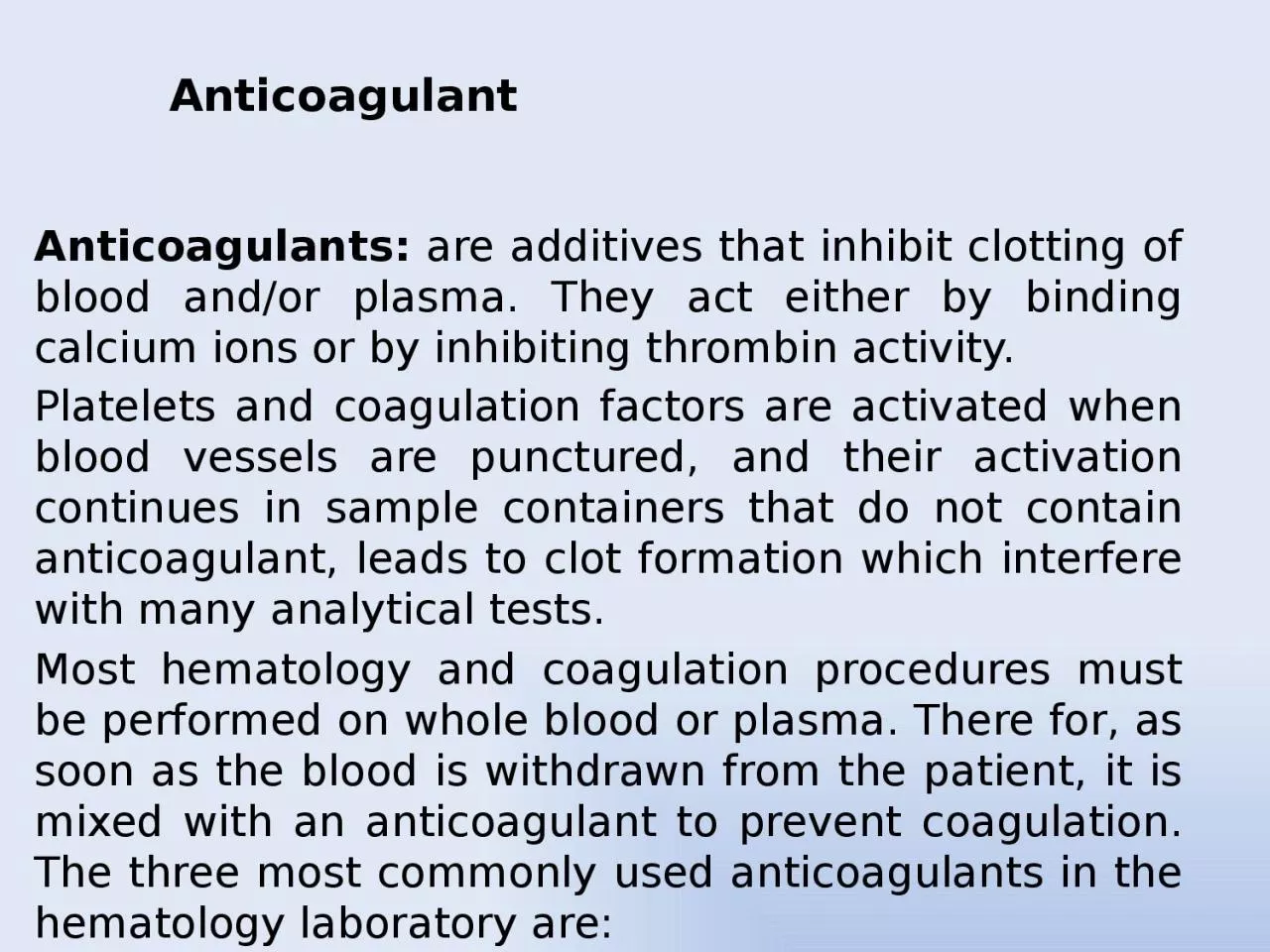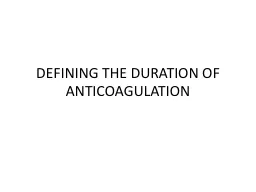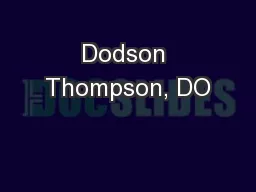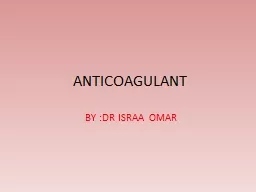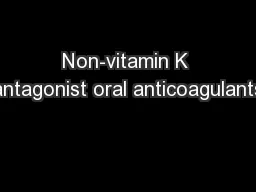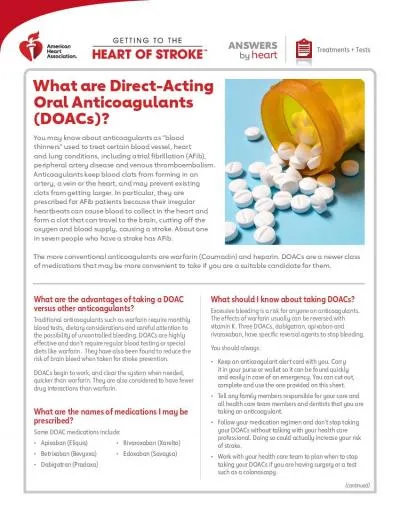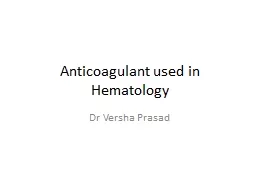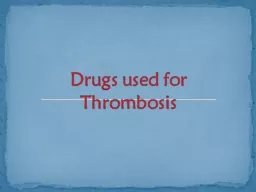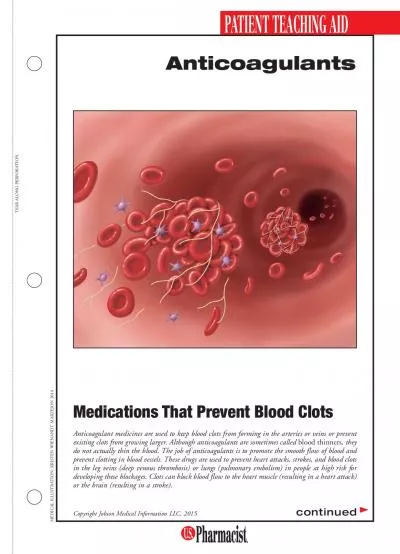PPT-Anticoagulant Anticoagulants
Author : edolie | Published Date : 2022-06-28
are additives that inhibit clotting of blood andor plasma They act either by binding calcium ions or by inhibiting thrombin activity Platelets and coagulation
Presentation Embed Code
Download Presentation
Download Presentation The PPT/PDF document "Anticoagulant Anticoagulants" is the property of its rightful owner. Permission is granted to download and print the materials on this website for personal, non-commercial use only, and to display it on your personal computer provided you do not modify the materials and that you retain all copyright notices contained in the materials. By downloading content from our website, you accept the terms of this agreement.
Anticoagulant Anticoagulants: Transcript
Download Rules Of Document
"Anticoagulant Anticoagulants"The content belongs to its owner. You may download and print it for personal use, without modification, and keep all copyright notices. By downloading, you agree to these terms.
Related Documents

